The introduction of Category 6 formalised a situation that had been evolving over many years. During the last decade, with data rates doubling every 18 months, Category 5e has had a hard time keeping up. Streaming media applications is now not the exception but the rule, essential to keeping individuals and companies up to date. Those data streams, however, have turned into floods and that, coupled with a growing reluctance of end-users to wait for data to arrive, has driven the development of higher bandwidth.
The global structured cabling market is worth around US$4 billion and some independent analysts confidently expect a 4% compound annual growth rate, even in today's somewhat turbulent economic circumstances. It is also predicted that soon 80-90% of all new cabling installations will be Category 6, giving it market dominance in a short period of time. In 2003, Category 6 will comprise 60% of all new installations worldwide.
In theory, greater bandwidth should mean faster, more efficient throughput and thus 'satisfaction guaranteed' for system designers, manufacturers, installers and clients alike. In fact, the introduction of Category 6 has come at a significant cost to the industry.
Nowhere is this more vividly highlighted than in current disputes involving major end users who have awarded Category 6 installations. Simply put, installations do not work as they should. Clients blame the suppliers; the suppliers blame the manufacturers; the manufacturers blame the installers. Result: considerable project downtime with all the concomitant loss of goodwill and money habitually involved in such wrangling.
So who or what is actually to blame? Ironically, in many cases it turns out to be the smallest part of the investments, namely the cabling.
Installation issues
When carried out incorrectly, cabling can be the cause of many network problems. A typical 10Base-T Ethernet network works well, even with components, connections and installation slightly off spec; Fast Ethernet has not been quite so accommodating, with an estimated 10-15% of Category 5 nodes failing to work at the predicted speed or at all.
The higher the speed, the higher the signal-to-noise ratio and the greater the reduction in performance margins. With Gigabit Ethernet signalling at a scorching one billion bits per second, only to be quickly overtaken by 10 Gigabit Ethernet, the move to Category 6 was inevitable. Not only do modern applications run better on Category 6, but future demands on the system are also potentially catered for. Category 6 is also slated to be used increasingly in the future residential market to support higher internet access speeds.
The higher bandwidth of Category 6 should mean better insertion loss, near-end crosstalk, return loss and equal-level far-end crosstalk. In other words, a vastly improved signal-to-noise ratio that is directly related to throughput; fewer errors, retransmissions of lost data and overall better reliability. Except when the cable installation is faulty.
Category 5 and 5e will pass acceptance testing with all kinds of anomalies in the cable. The testing requirements for Category 6, however, are much more demanding. Kinks, bends, and excessive pulling that would not significantly affect the test results of Category 5 and 5e may cause a failure on Category 6. Installers used to taking short cuts when installing will not get away with such practices with Category 6.
Cable manufacturers have spent a great deal of time and money in r&d to make their cables perform to the exacting requirements of the Category 6 standards. Many aspects are critical to the performance: the concentricity of the copper, the twist and lay of the cable pairs and the tightness of the jacket all have a bearing on the cable's ability to conform and exceed the standards. All of this good work can be quickly undone by inexperienced or poorly supervised cable installations.
The same can be said for fibre optic cables which, while more robust than copper cable, nonetheless can be damaged on installation and prove very expensive to correct.
Installers that are unfamiliar with the sensitive nature of Category 6 cables may use unsuitable procedures, seriously corrupting the performance of the installed system. In 20% of cases a Category 6 installation will produce failed links because of cables being pulled too hard during installation. Exceed the maximum pulling strength of 100 N when installing a Category 6 cable, and the bandwidth will be damaged, impairing current functionality and jeopardising future upgrades.
System solutions
There are some neat solutions emerging as the industry takes on board the stringency of the new Category 6 requirements.
One of these, Pullsafe, was designed specifically for structured cable and fibre optic installations by IBM technical staff working in close co-operation with Computabyte, a Wiltshire-based specialist datacomms manufacturer. This new approach to Category 6 cable pulling already has the support of several computer and cable manufacturers in Europe, plus an increasing number of installation companies.
Pullsafe is based on a magnet assembly specifically tuned to the maximum pulling strength of 100 N specified by standards bodies and cable manufacturers. The moment the pulling strength is exceeded the magnet assembly breaks away, leaving the cable intact. The system can then be quickly reattached to the cables to continue the installation.
Pullsafe comes in kit form, comprising a pulling handle and magnets and cable gripping devices. The cable grips come in two sizes, one for Category 6 cables and another larger diameter grip for use with fibre optic cables.
In essence, Pullsafe completely safeguards against one of the main causes of link failures and damaged cables, plus their associated test failures, impaired headroom and the cost of reinstalling more cable.
Using new Category 6-oriented products, however, will be of little avail unless we recognise that installing cabling for higher speed networks is completely different from installing power and control circuits. Ensuring the correct pulling tension is just one of a number of issues that are critical to successful Category 6 installation. Indeed, to protect themselves, many computer and cable manufacturers, are now stipulating that their equipment is installed by a Pullsafe system in order to benefit from their warranties.
In the long run, Category 6 should benefit the client by providing a substantial return on investment due to lower life cycle costs, longer system life and savings of 60-80% per change. As long as cable installers get it right.
Source
Electrical and Mechanical Contractor
Postscript
Mark Harrison is sales director of Computabyte.










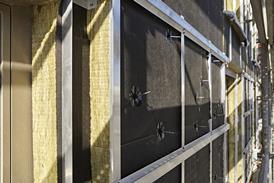

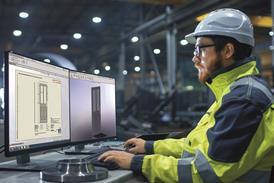

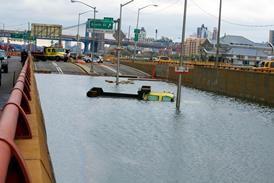
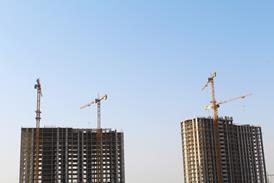
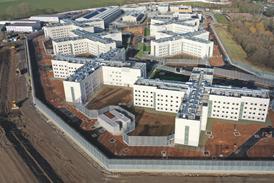




No comments yet